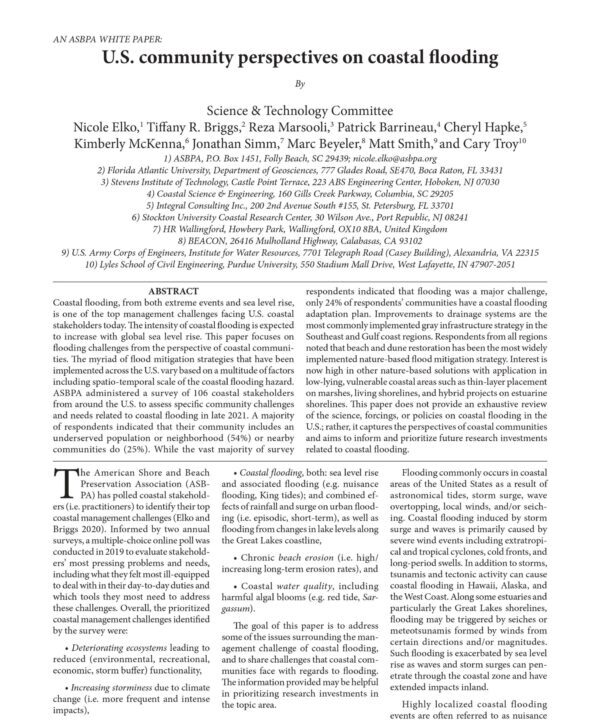Abstract or Summary

Coastal flooding, from both extreme events and sea level rise, is one of the top management challenges facing U.S. coastal stakeholders today. The intensity of coastal flooding is expected to increase with global sea level rise. This paper focuses on flooding challenges from the perspective of coastal communities. The myriad of flood mitigation strategies that have been implemented across the U.S. vary based on a multitude of factors including spatio-temporal scale of the coastal flooding hazard. ASBPA administered a survey of 106 coastal stakeholders from around the U.S. to assess specific community challenges and needs related to coastal flooding in late 2021. A majority of respondents indicated that their community includes an underserved population or neighborhood (54%) or nearby communities do (25%). While the vast majority of survey respondents indicated that flooding was a major challenge, only 24% of respondents’ communities have a coastal flooding adaptation plan. Improvements to drainage systems are the most commonly implemented gray infrastructure strategy in the Southeast and Gulf coast regions. Respondents from all regions noted that beach and dune restoration has been the most widely implemented nature-based flood mitigation strategy. Interest is now high in other nature-based solutions with application in low-lying, vulnerable coastal areas such as thin-layer placement on marshes, living shorelines, and hybrid projects on estuarine shorelines. This paper does not provide an exhaustive review of the science, forcings, or policies on coastal flooding in the U.S.; rather, it captures the perspectives of coastal communities and aims to inform and prioritize future research investments related to coastal flooding.